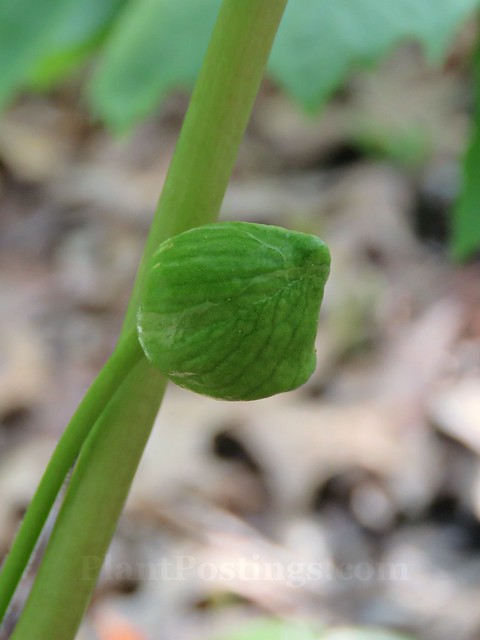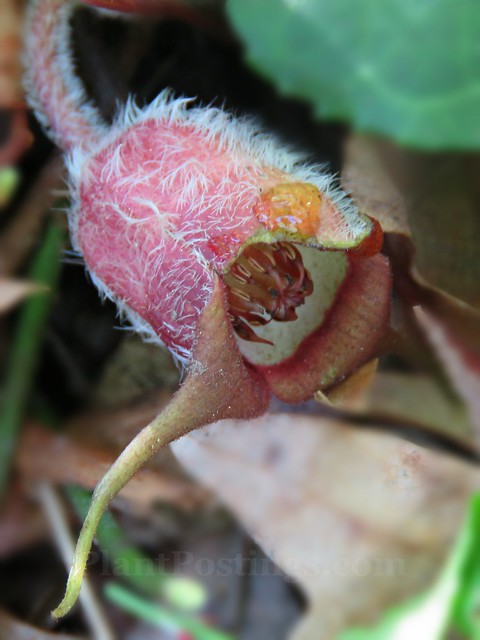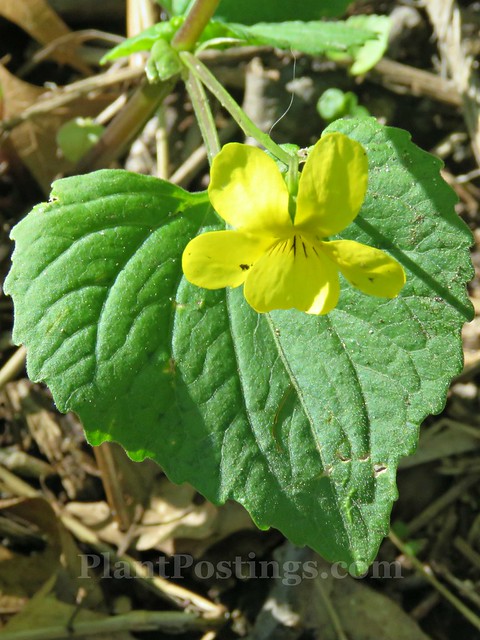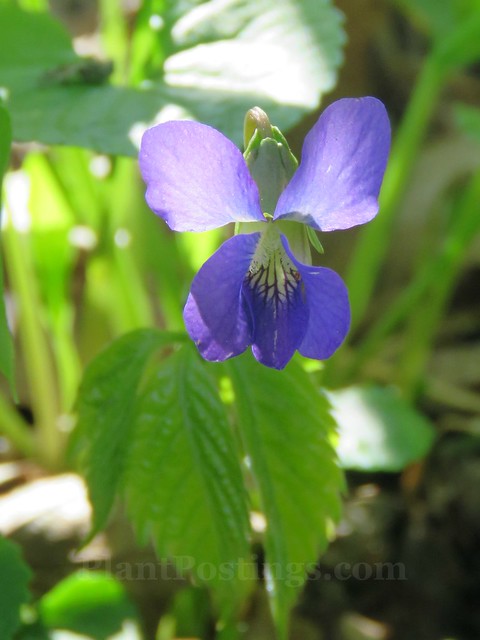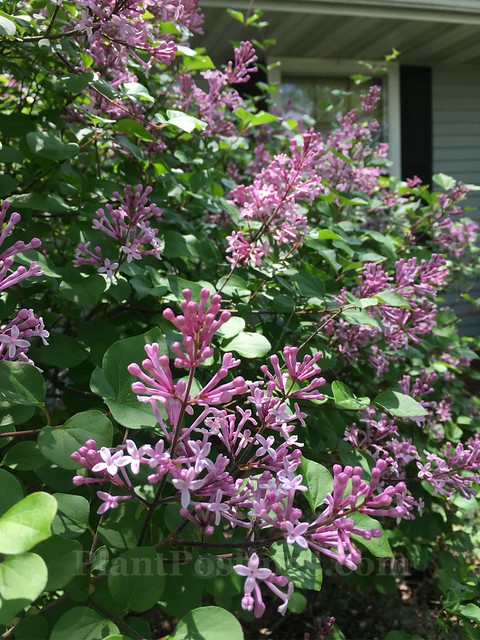
No shrub can compete with the beauty, blooms, and fragrance of the Dwarf Korean Lilac (Syringa meyeri) when it's flowering. I've posted about this one many times, and I probably will again, but it deserves to be plant of the month and I've never done that until now.
We have two of these shrubs, both of which were here when we moved to this property nearly 20 years ago. Every year, the explosion of lavender/pink flowers is one of my favorite garden events of the season, generally peaking just after the Common Lilacs (Syringa vulgaris).
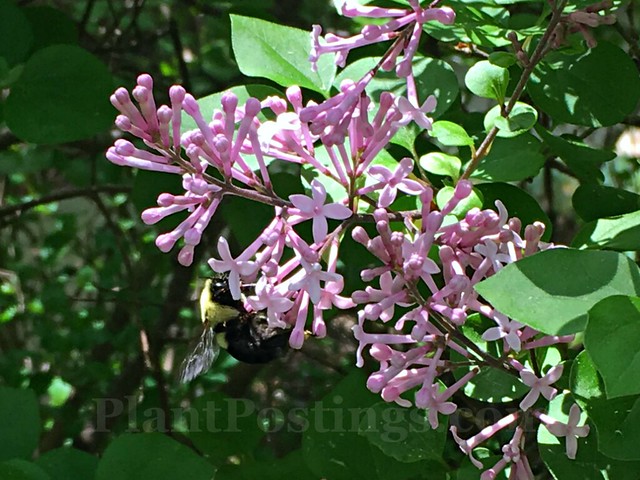
No, this is not a native shrub, but it definitely has pollinator value. The bumblebees were all over it when I was taking these photos. Later, I saw a monarch butterfly on it (I was in the garden working and didn't capture the photo). I've also seen tiger swallowtails and other butterflies, honeybees, hummingbirds, and other pollinators enjoying its sweet nectar.
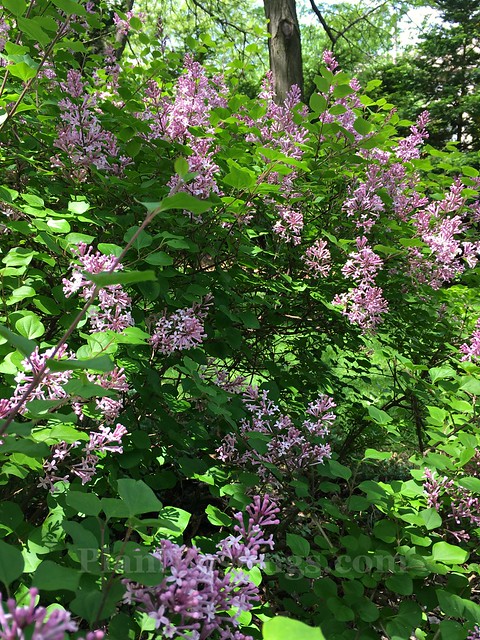
This year's damp, cool spring has been good to these shrubs, and they seemed to handle the extremely cold winter better than the Common Lilacs.
Dwarf Korean Lilac is hardy in USDA garden zones 3 to 7, according to the Missouri Botanical Garden. It naturally reaches a height of 5 to 7 feet, and a spread of 6 to 10 feet, but we keep ours trimmed to a much smaller width--pruning it each spring after it blooms. Although it's listed as needing full sun, both of ours thrive in partial sun.
Most winters, rabbits chew the lower branches; with snow cover, the damage is less significant. In years with heavy rabbit grazing, I simply prune the entire shrub more dramatically, and it always bounces back the next spring.
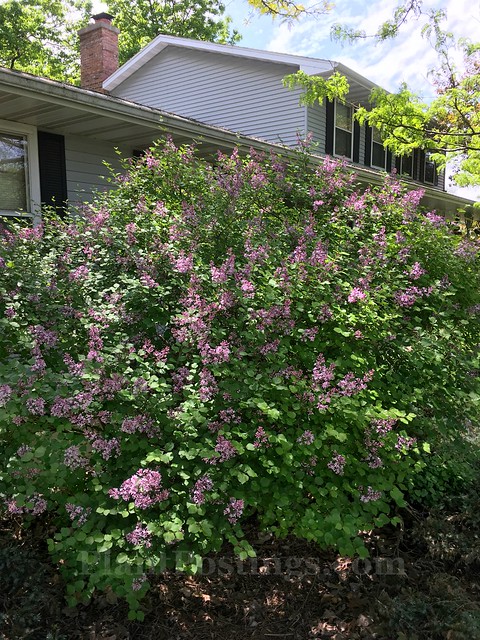
I like the statement it makes at the corner of the house. From this angle, you can't see it, but the shrub borders the driveway and a sidewalk. When you walk by, the scent is so very sweet!
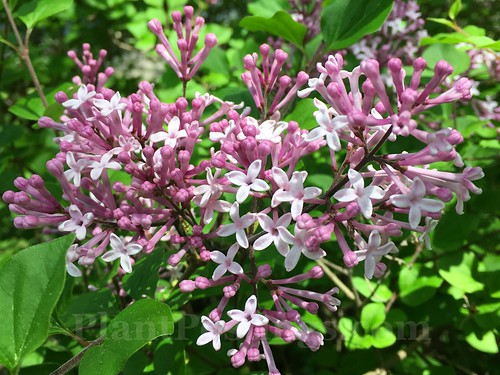
My heart is happy when the Dwarf Korean Lilacs bloom.

